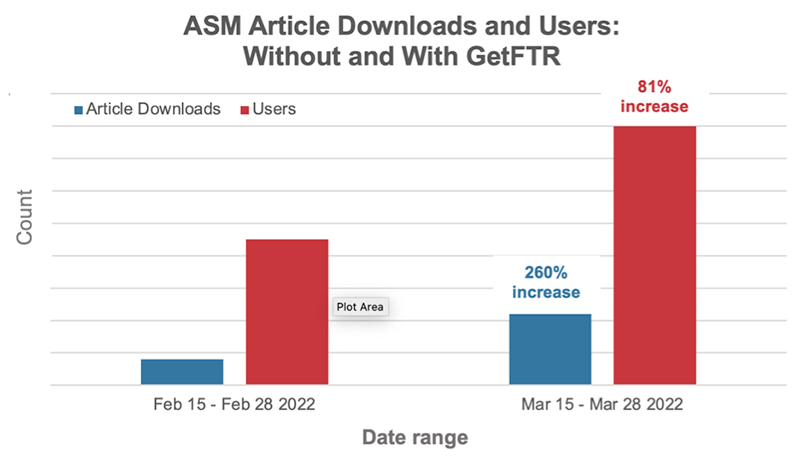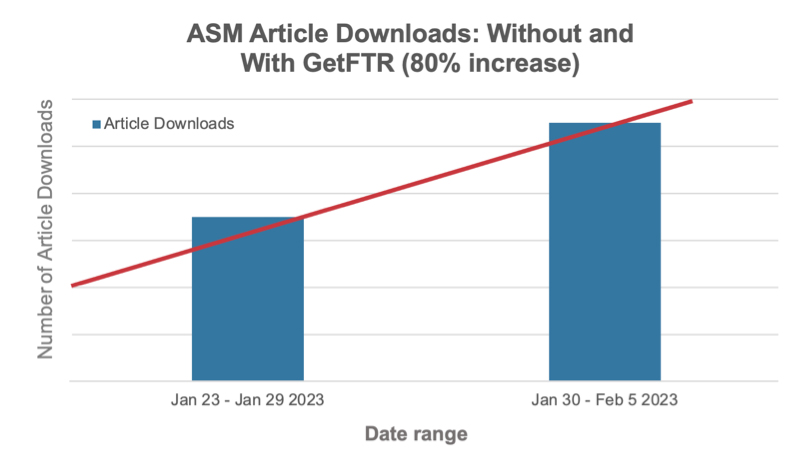CASE STUDY
ASM and GetFTR Case Study to demonstrate how GetFTR impacts usage
Like many Society publishers, the American Society for Microbiology (ASM) is always looking for better ways to serve its community and ensure research is reaching the people who need it. They are acutely aware of the challenges researchers face as they navigate the scholarly landscape and attempt to move from article discovery to article access. Numerous discovery resources and authentication layers render the process confusing and sometimes obstructive.
Today, researchers are presented with multiple links to content in discovery tools and may not know which one leads to the authoritative version of record. Deborah Plavin, Digital Publishing Manager, ASM said “We wanted to ensure that we gave researchers another avenue to access research. Their institutions paid to subscribe to the content, so it is our responsibility to plug any gaps”. She continued that joining GetFTR was a “no brainer”. “A service which removes some of the known barriers to accessing content makes perfect sense, and we were keen to get involved. The low price point made an already compelling offer even more attractive.”.
ASM’s journals are hosted on the Atypon platform and GetFTR and Atypon have been working closely to streamline the on-boarding process for some time; “It really was just a matter of flicking a switch,” said Deborah. From signing the contract to being up and running was about 2 months and we really appreciated how easy the whole process was”.
ASM went live with GetFTR in February 2022 and within weeks they saw an uptake in their usage via discovery resources which had integrated with GetFTR. “Comparing two weeks before joining GetFTR with two weeks after, we saw a 260% increase in article downloads from users coming from Mendeley and Semantic Scholar, so we were happy that our decision to integrate had already delivered a better experience for our readers.”
However, whilst ASM saw an improvement in their usage, they could not categorically say that the increases were all down to GetFTR, as there may have been seasonal fluctuations. By comparing article downloads year on year to account for seasonality, an increase of 35% was measured.
Therefore, ASM agreed to work with GetFTR to design an experiment which would test and prove (or disprove) the hypothesis that GetFTR provides streamlined pathways to content, and therefore leads to more article downloads.
ASM identified two weeks with similar traffic. In week one, GetFTR was switched off and in week two GetFTR was switched back on. ASM measured an 80% increase in article downloads in the second week.
“It’s been great working with the GetFTR team to see if we can measure the impact of the service” said Deborah. “Having additional data showing similar results has been gratifying; we are seeing usage growth from services integrated with GetFTR beyond those we initially looked at, and so we are excited to see how this evolves.

























































